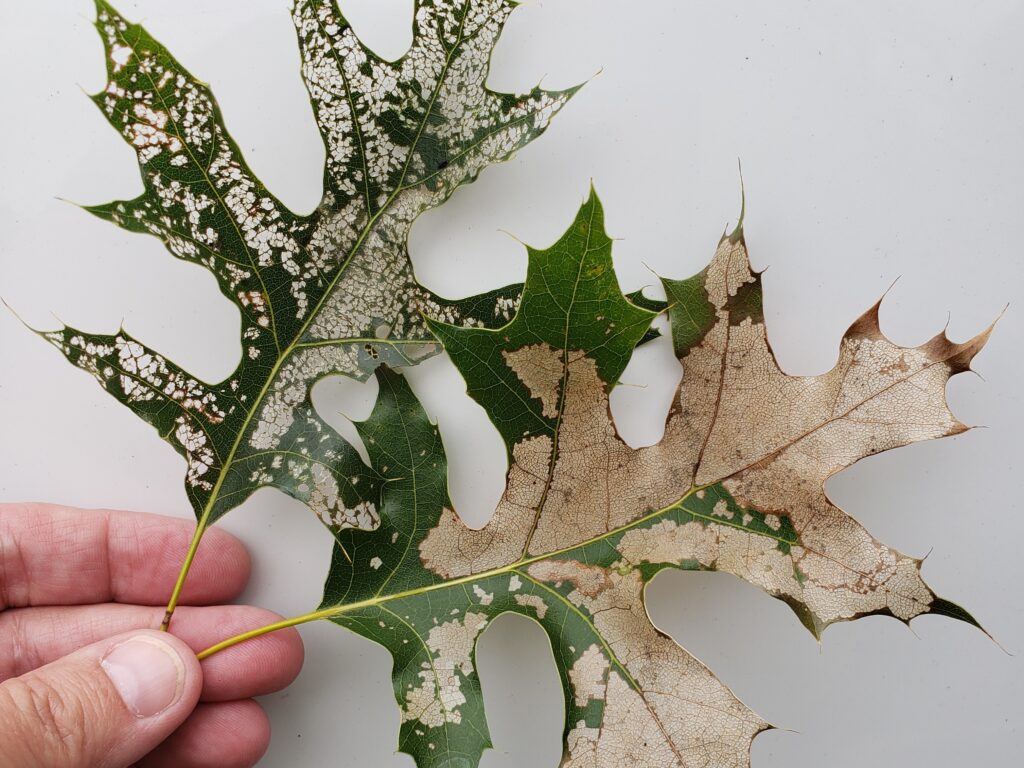Article By: Linda Williams, DNR Forest Health Specialist, Woodruff
Linda.Williams@wisconsin.gov or 920-360-0665
The oak slug sawfly (Caliroa quercuscoccineae), sometimes called the scarlet oak sawfly, has the appearance of a small, slimy slug. Its slime helps it stick to leaves it feeds on. The oak slug sawfly’s tiny larvae feed in groups on the undersides of oak leaves, scraping out the green material from between the veins of the leaves. The upper leaf surface is usually left intact, creating a “stained glass window” look. Oak slug sawfly has the ability to completely defoliate leaves before dropping to the ground to pupate.

Oak slug sawfly larvae cause defoliation on oak leaf after feeding.
Photo Credit: Wisconsin DNR


